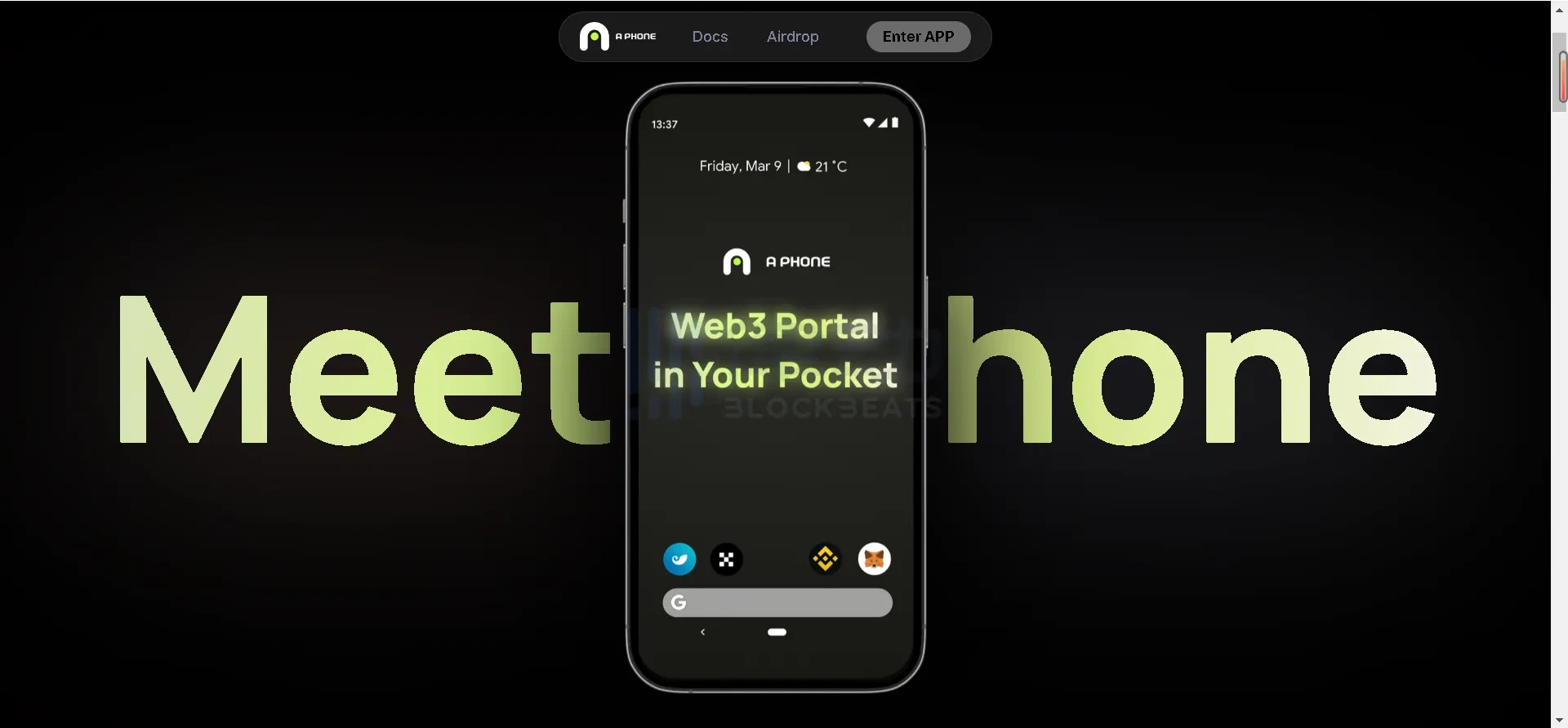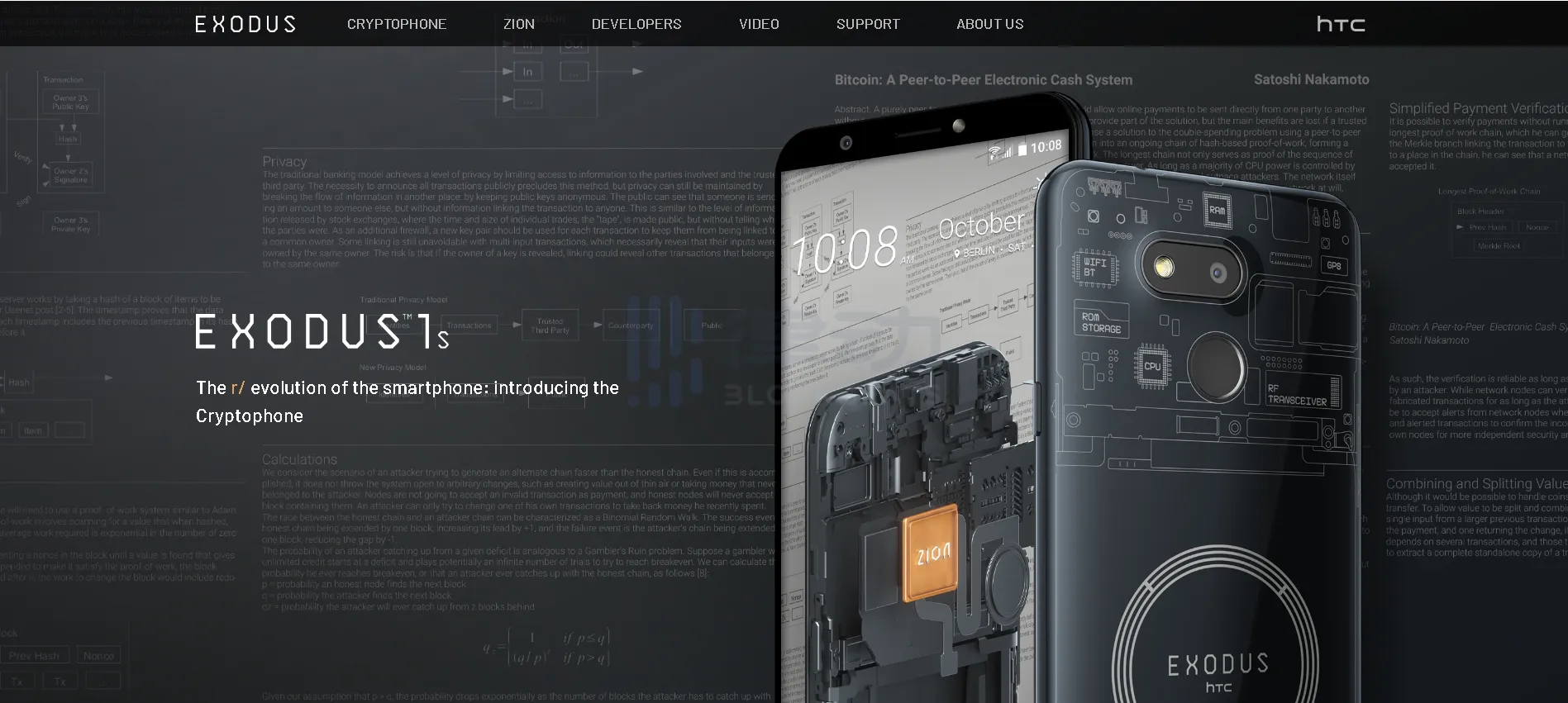Last year, the narrative of DePIN set off a wave of enthusiasm for Helium (Mobile), although DePIN seemed inconspicuous during the "Bitcoin bull market," it still brought surprises to the cryptocurrency industry. At the recent ETHDenver 2024 conference, DePIN was listed as a popular track, and now the success of io.net has once again stirred up the DePIN narrative.
DePIN has numerous projects in the field, and the massive airdrop of 30 million BONK tokens earlier made Saga a success. The airdrop value exceeded the selling price of the mobile phone itself, making the previously overlooked cryptocurrency phone "hard to find," and even driving up its already expensive retail price.
However, the uses and functions of cryptocurrency phones have not been fully explored, and a new concept has emerged—cloud phones.
New Concept in the DePIN Field: Cloud Phone
APhone claims to be the first decentralized cloud-based smartphone, launched on Solana. According to the official website, APhone can seamlessly integrate itself with its processing power, storage capacity, and GPU, providing continuous, high-performance access.
In addition, with the support of Aethir's cutting-edge decentralized cloud technology, APhone can ensure higher security, privacy, and user protection. At the same time, it provides countless smartphone features in a single device, offering a comprehensive and advanced mobile experience.

The total supply of the application token PHONE in the APhone ecosystem is 210 billion, with 85% owned by the community treasury. Currently, APhone has launched a points program, and the points will be converted into PHONE tokens.
PHONE tokens will give holders voting rights in the APhone DAO that manages the platform. In addition to governance, APhone must be pre-installed with PHONE tokens, and holding a certain amount of PHONE tokens can unlock special access permissions and customization.
APhone aims to become the ultimate gateway for approved web3 applications, similar to the App Store on the iPhone. The documentation of APhone provides a detailed introduction to the specific operational principles, but at present, its user experience is similar to simulating mobile phone operations on a computer and is still a relatively "abstract" concept.
Resurgence of Cryptocurrency Phones
In the DePIN field, compared to "cloud phones," cryptocurrency phones are more well-known. Especially with the recent launch of the Saga phone by Solana, which was sold out due to the anticipated airdrop, even Solana co-founder Anatoly himself is using it.
Compared to regular iPhones or Android phones, cryptocurrency phones emphasize blockchain, cryptocurrency, and decentralized applications. The most common feature is enhanced security to protect your cryptocurrency and private keys, and some can run full Bitcoin nodes and even be used for mining.
HTC Opens the Door to Cryptocurrency Phones
In fact, the origin of cryptocurrency phones can be traced back to 2019 when HTC collaborated with Binance to release the limited edition Exodus 1 phone. Subsequently, HTC launched a second blockchain phone, Exodus 1s.
Exodus 1S is a significantly simplified version of Exodus 1, priced at $244, with an integrated Zion hardware wallet that allows users to store and send Bitcoin, Litecoin, Ethereum, and other ERC-20 tokens based on the Ethereum blockchain. Most importantly, Exodus 1s can function as a full Bitcoin node, meaning it can verify and execute transactions on the device itself without relying on other services.
However, to run the node, the Exodus 1 must remain plugged in and connected to a Wi-Fi network, essentially rendering it useless as a smartphone. In addition, the dapp provided by Exodus 1s is almost useless.

Not only is the advantage of cryptocurrency phones not reflected, according to an article by decrypt, Exodus 1s as a regular smartphone only has the advantage of long battery life, but its disadvantages are more pronounced, with a cheap-feeling lightweight plastic structure, low-end Snapdragon 435 processor, and only a single 13MP rear camera.
However, the appearance of Exodus 1s undoubtedly opened the door to cryptocurrency phones.
In the same year, Samsung launched the cryptocurrency phone Galaxy S10, priced at $899. Not only were there improvements in the performance and appearance of the smartphone, as a cryptocurrency phone, the Galaxy S10 supports dozens of currencies such as Bitcoin, Ethereum, LEO tokens, Chainlink, and more. At the same time, the dapp lineup includes games, social media, and financial applications. With the Snapdragon 855 processor, Galaxy S10 also has its own trusted execution environment. Subsequently, Samsung collaborated with Kakao to release the blockchain version of KlaytnPhone, named Galaxy Note 10.
In addition to Samsung, there are also other cryptocurrency phones such as the Finney phone by Sirin Labs, which activates the wallet by sliding (priced at $999), the modular phone Pundi XPhone, and the cheapest cryptocurrency phone Electroneum M1 (priced at $80).
Saga's Massive Airdrop Leads the Way for Cryptocurrency Phones
The high price and unfinished user experience of cryptocurrency phones in the early attempts failed to attract any meaningful appeal, but Solana's Sage phone succeeded.
In July 2022, Solana released the web3 flagship Android phone Saga. At that time, the market was in a bear market, and there were no positive factors in the cryptocurrency phone field, so most users were not willing to spend $1000 to buy Saga. Therefore, Saga's early sales were slow, selling only about 20-30 units per day, far from the target of 20,000 units. Even after the price was reduced by 40% from $1000 to $599 in August 2023, the phone still struggled to attract buyers.
However, the most important thing is that Saga airdropped 30 million BONK tokens to each phone owner. In November 2023, BONK broke through resistance and continued to soar, causing the value of the airdrop to exceed the cost of the phone itself, changing the fate of Saga.
Demand for Saga phones significantly increased, and by December 15, 2023, 15,000 Solana Saga phones were sold out in a single day. The frenzy surrounding the phone reached its peak. This cryptocurrency phone, which was initially overlooked even after the price dropped to $599, was resold for as much as $5000 on secondary markets like eBay.
After the phone sold out, the hype surrounding the Solana Saga phone further intensified, with various projects announcing a series of additional rewards for Saga phone users. For example, Access Protocol distributed 100,000 ACS tokens, Saga Monkes airdropped 8505 NFTs, Solana meme project Samoyedcoin also airdropped 1250 SAMO tokens, and many other projects such as Solend are committed to airdropping tokens to Saga owners. Additionally, projects like Helium provided benefits such as a one-month free trial of Helium Mobile.
It is reported that Solana will launch the second generation of cryptocurrency phones in the first half of 2025, with a tentative price of $450. Many projects, including Solend, Helius, Chads, and Solcial, have already announced airdrops, benefits, and giveaways for owners of Saga 2.
The success of the first generation allowed Saga 2 to achieve 100,000 pre-sales within just 30 days of its release, and other cryptocurrency projects have also begun to launch their own cryptocurrency phones. Among them, Aptos announced a collaboration with Jambo Technology to launch the JamboPhone, designed specifically for the Z generation users in emerging markets in Africa, Southeast Asia, and Latin America.
What are the opportunities for cryptocurrency phones?
The success of Saga can be said to have brought economic stimulus due to the airdrop expectations. After all, from the perspective of the development of cryptocurrency phones, even in 2024, the building blocks for developing high-performance cryptocurrency phones seem to be non-existent, as blockchain infrastructure is still in the early stages of development.
Even today, there is still a lack of interesting applications in the DeFi user experience and ecosystem, not to mention the application stores on cryptocurrency phones 6 or 7 years ago. In addition to the limited app selection, cryptocurrency phones are quite expensive compared to other regular smartphones on the market, and they lack practical tools for everyday cryptocurrency use, making it difficult for consumers to find demand in the cryptocurrency phone market.
However, as internet access expands globally, people are increasingly handling cryptocurrency and traditional financial transactions on their smartphones. Affordable access to the DeFi ecosystem through smartphones has the potential to attract billions of dollars into the cryptocurrency field. Additionally, cryptocurrency-native phones and app stores will allow developers to reach thousands of advanced DeFi users and enable them to innovate freely without facing the challenges of opaque guidelines and fees associated with markets like Google Play Store or Apple App Store.
In the long run, cryptocurrency phones can be seen as tools that prioritize encrypted values such as freedom, self-custody, and privacy, ensuring that users can control their assets and digital rights. In this case, cryptocurrency phones have built-in secure enclaves, similar to safes within the phone, that can securely store private keys and isolate them from other activities on the phone.
One day in the future, we may look back at the BONK airdrop and how it sparked a shift in power dynamics in the tech industry. Perhaps cryptocurrency phones really can bring cryptocurrency into the mainstream, but only time will tell.
免责声明:本文章仅代表作者个人观点,不代表本平台的立场和观点。本文章仅供信息分享,不构成对任何人的任何投资建议。用户与作者之间的任何争议,与本平台无关。如网页中刊载的文章或图片涉及侵权,请提供相关的权利证明和身份证明发送邮件到support@aicoin.com,本平台相关工作人员将会进行核查。




